Phono Needle Art
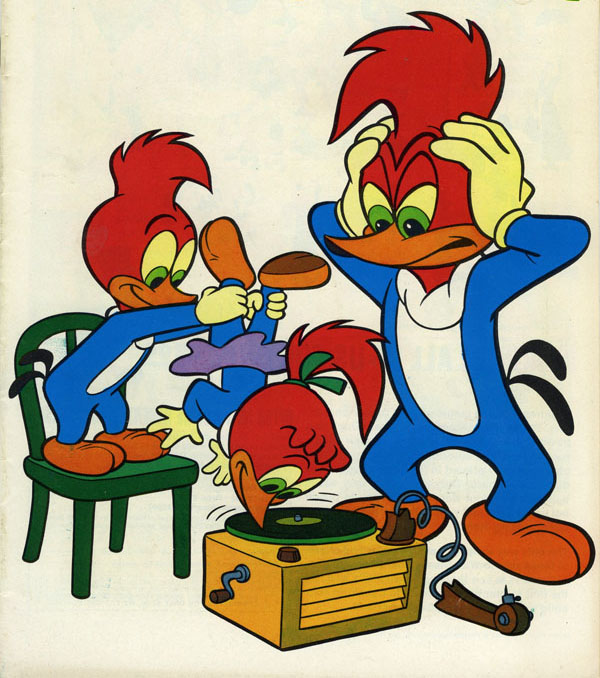
Art
and Connections with the Phonograph Needle
By Doug Boilesen 2020
The phonograph's reproduction of recorded
sound is heard when the 'rubber hits the road," i.e., when the
needle hits the grooves of the record. Early phonographs like Berliner's
Gramophone and its descendent Victor Talking Machine Company used
a sharp point, normally a steel needle, to follow the groove of a
record to create sound. Berliner's United States Gramophone Company
began to manufacture 7-inch hard rubber discs so that for his 1894
machines the needle literally hit the rubber of the record.

Victor Soundbox
with steel needle
- Courtesy Antique
Phonograph Society

"Needles were made of various materials:
steel, chrome, fibers, thorn, cactus, sapphire, and diamond...As early
as 1906, there were nine types of needle available: three to play
quietly, three to play at medium volume, and three types for loud
playback." (1)
A needle tin could be purchased that
contained steel talking machine needles. The variety of designs, shapes
and companies could create its own gallery of phonograph needle art.
The following example is from the collection of Arnold
Schwartzman (3), author of Phono-Graphics, where many more
can be seen.
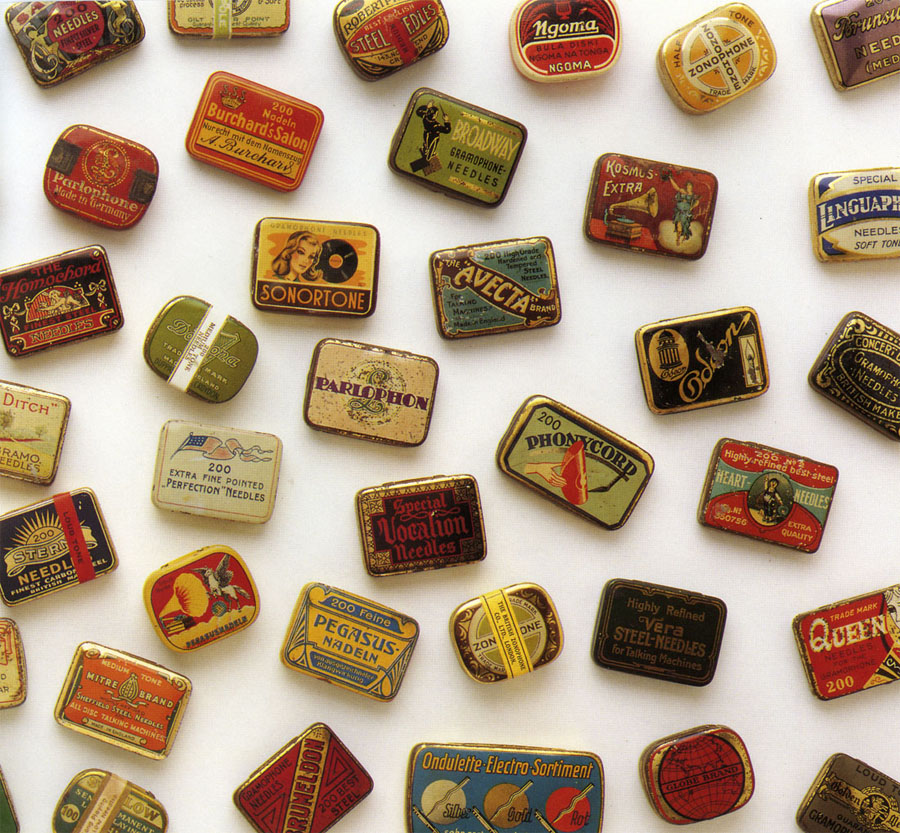
Assortment of needle tins
courtesy of Arnold Schwartzman (3)
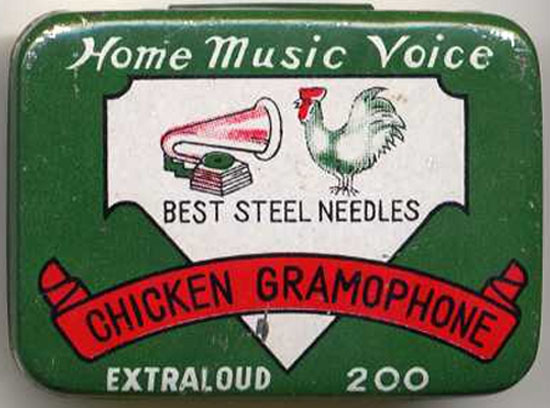
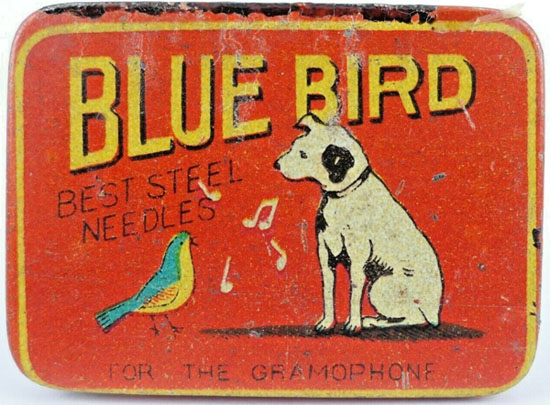
My favorite phonograph needle
art, however, is where a bird or plant or other 'figure' is used as
the needle. For example, a bird positioned on a turntable with
its beak pointing into the groove of a record as a stylus is the most
common of those artistic adaptations.
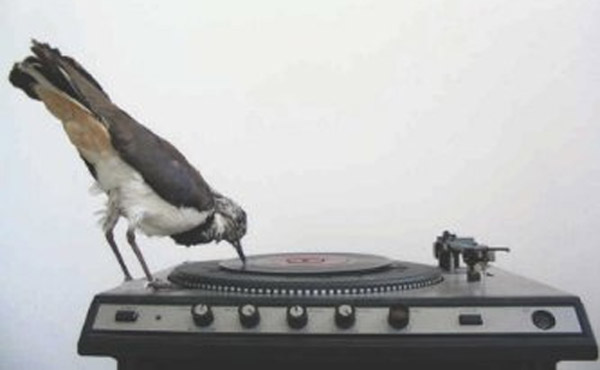
Cover illustration for
Poetry book by Jake Adam York titled Abide. Photo courtesy of
Jeroen Diepenmaat ©2005
Fred Flintstone and Woody Woodpecker
used bird beaks for their record players as does EMEK in his 2003
poster "Phono Bird"; Hot Stuff "The Little Devil"
used his 'devil tail' for a stylus (see below examples).
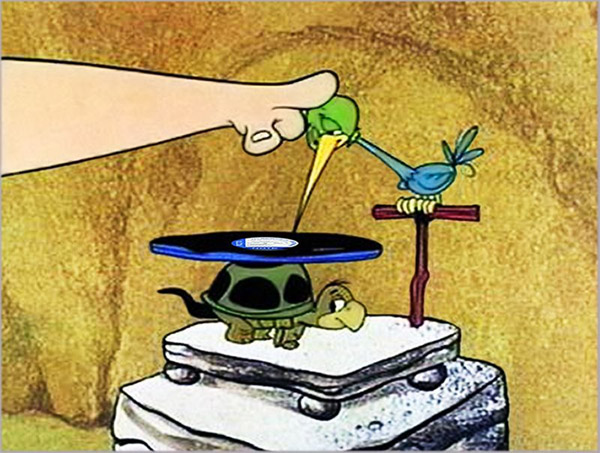
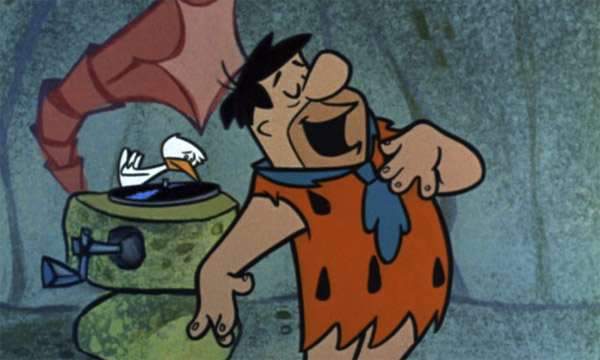
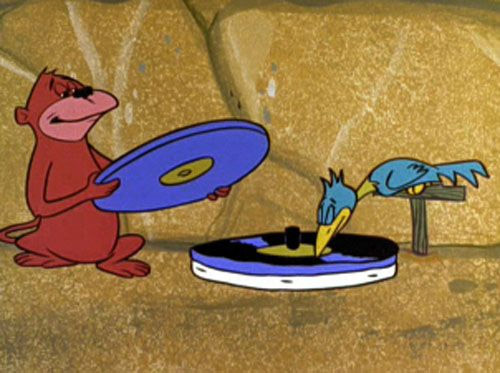
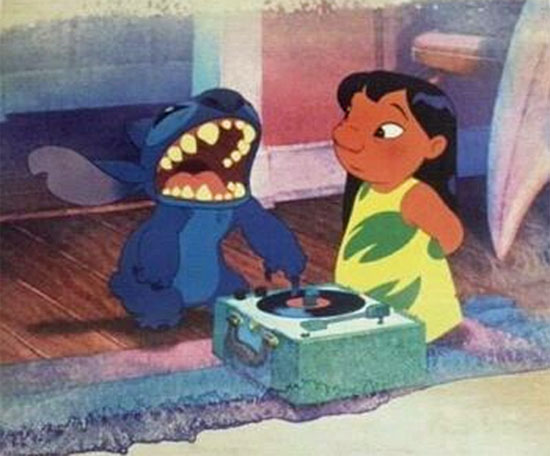
Lilo and Stitch,
Disney, 2002 from trade magazine advertisement for Oscar promotion.
(PM-2112)

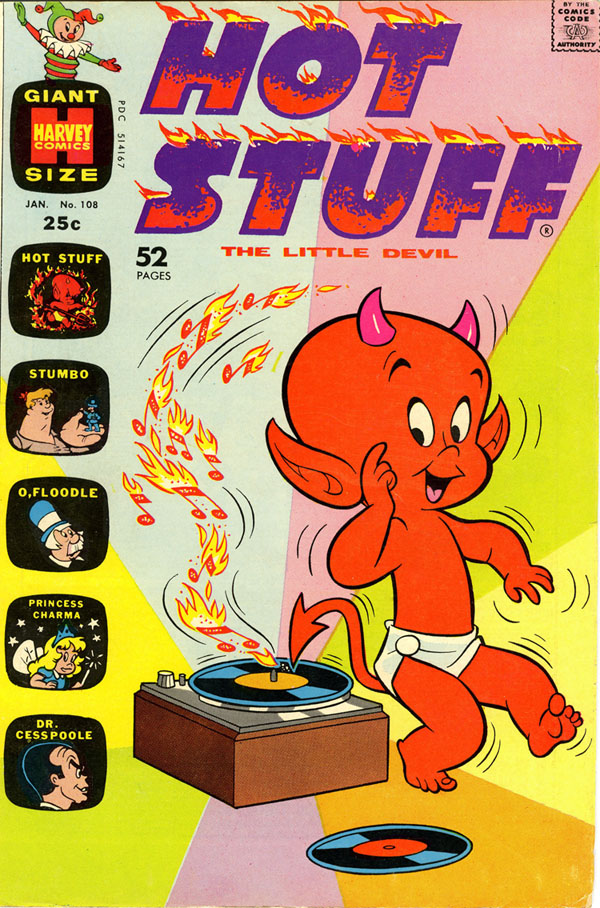
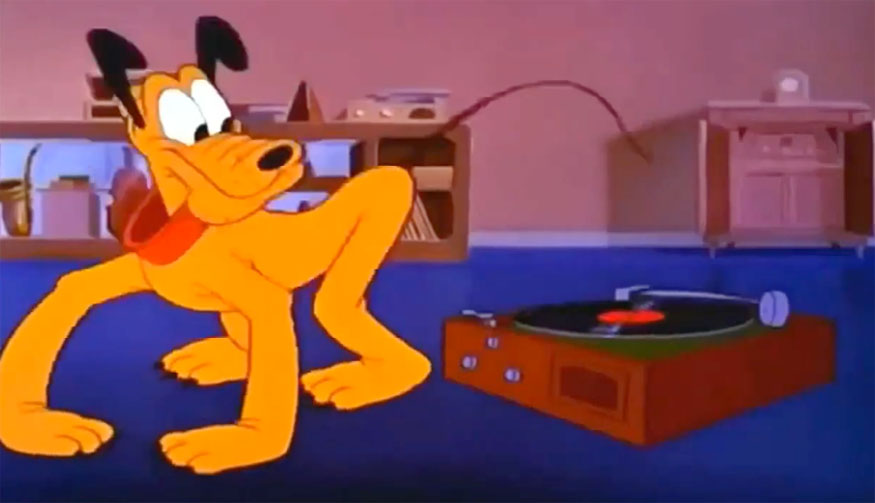
WATCH Clip of Pluto's Blue Note, Walt Disney (1947)
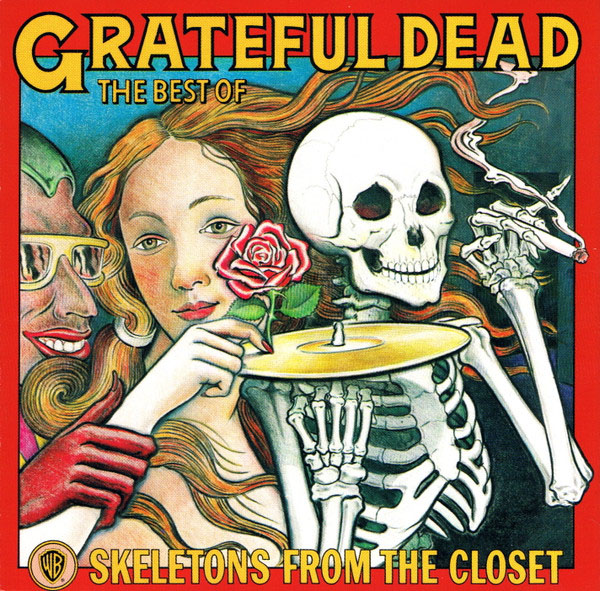
CD Cover Art, The Grateful Dead, 1974.
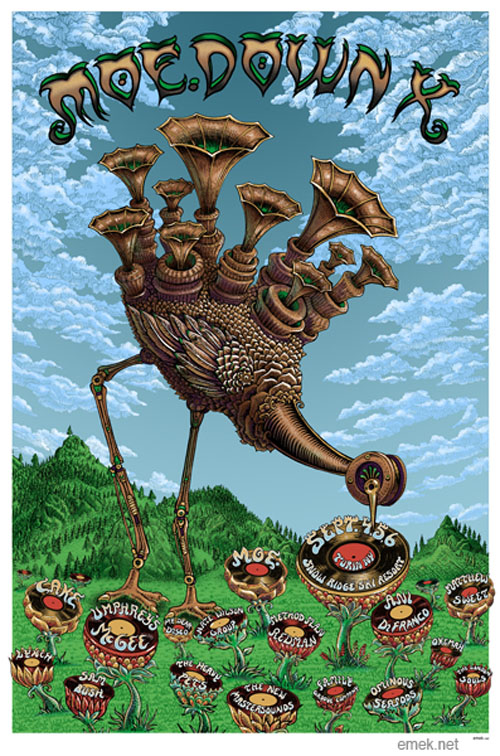
"Phono Bird" Courtesy of EMEK, 2009, Silk screen, 21" x 31".

Coachella
"Flower"
Concert
poster for Coachella, Empire Polo Field, April 27-29, 2007 Courtesy
of EMEK.net
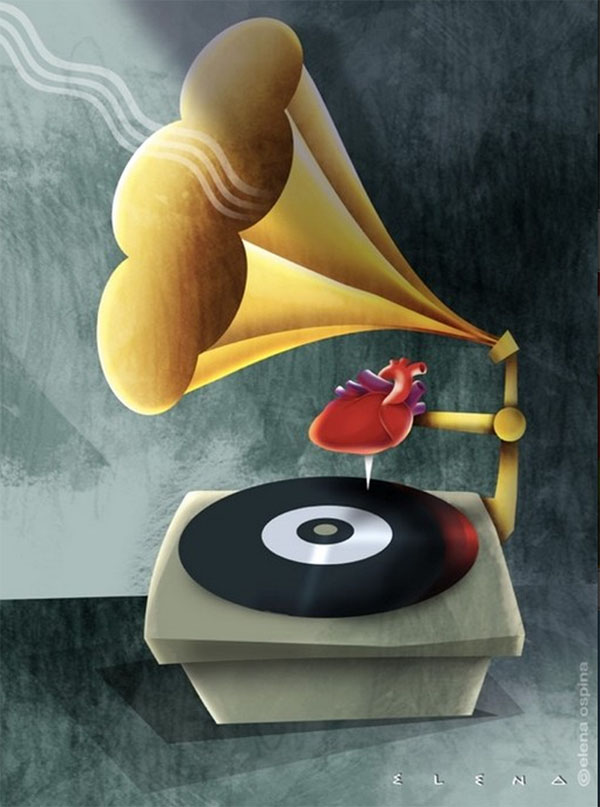
Artist:
Elena Maria Ospina Mejia
Elena Maria Ospina Mejia
is a painter, illustrator and cartoonist from Columbia. Image courtesy
of the European Cartoon gallery website.
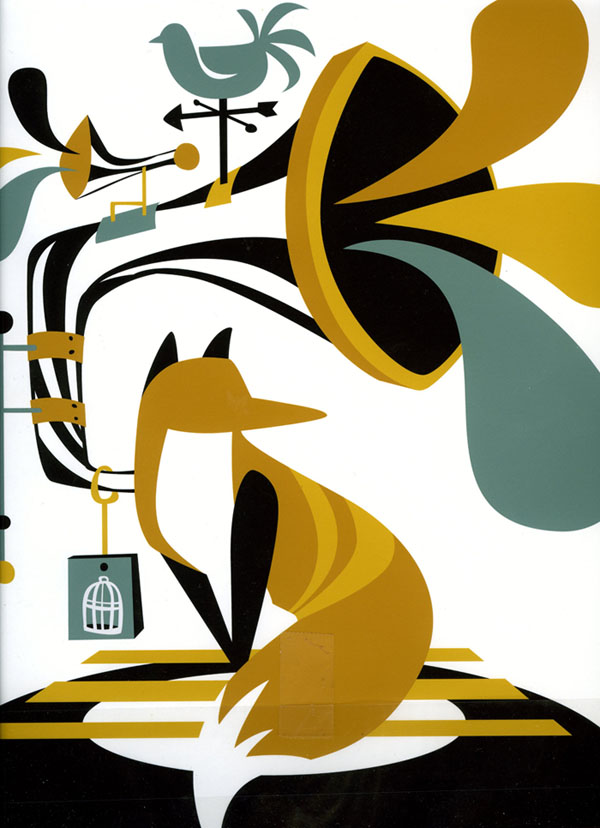
Print by Pam Wishbow -
Fox's tail is the stylus for the record

Raven and Record Player,
Lantern Press Postcard 2024
Soldier's bayonet used as needle
to play message on the record
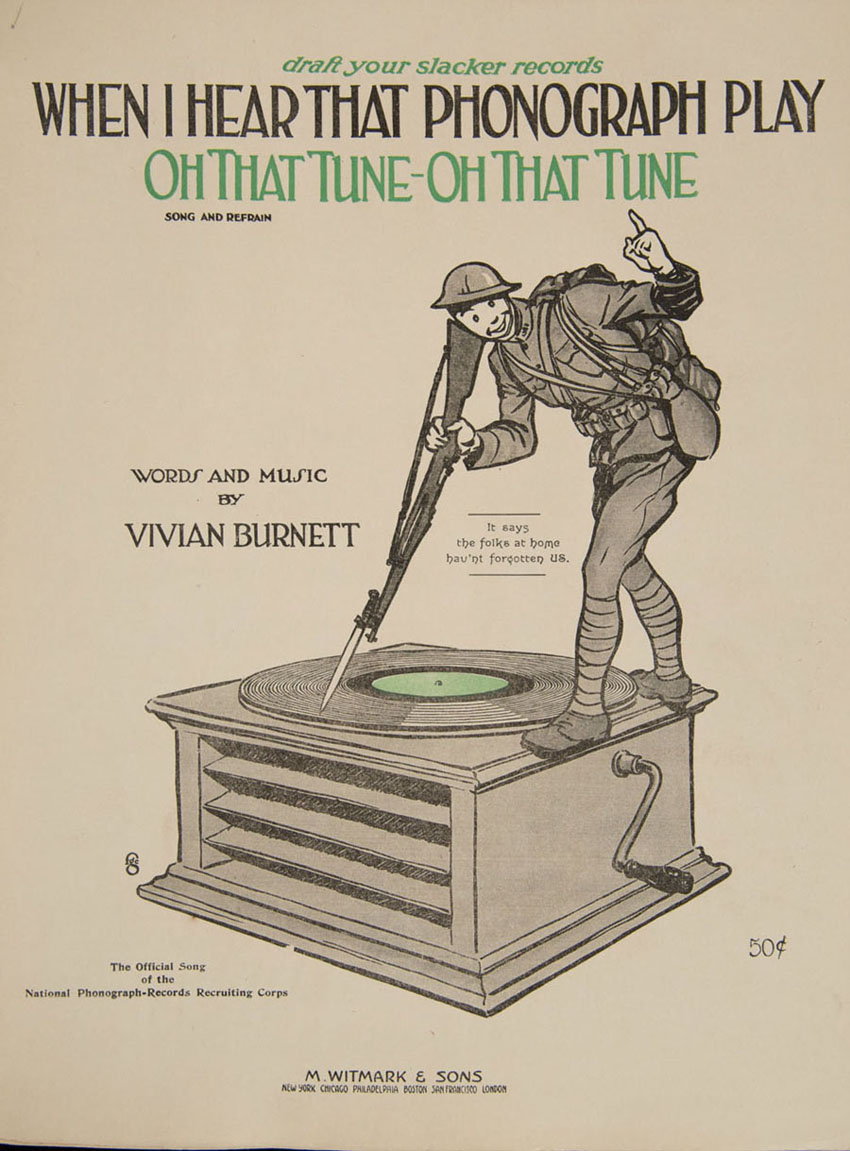
When I Hear That Phonograph
Play, M.
Witmark & Sons, New York 1918 - Soldier's
bayonet used as needle to play message on the record, James
Francis Driscoll collection
of American sheet music.
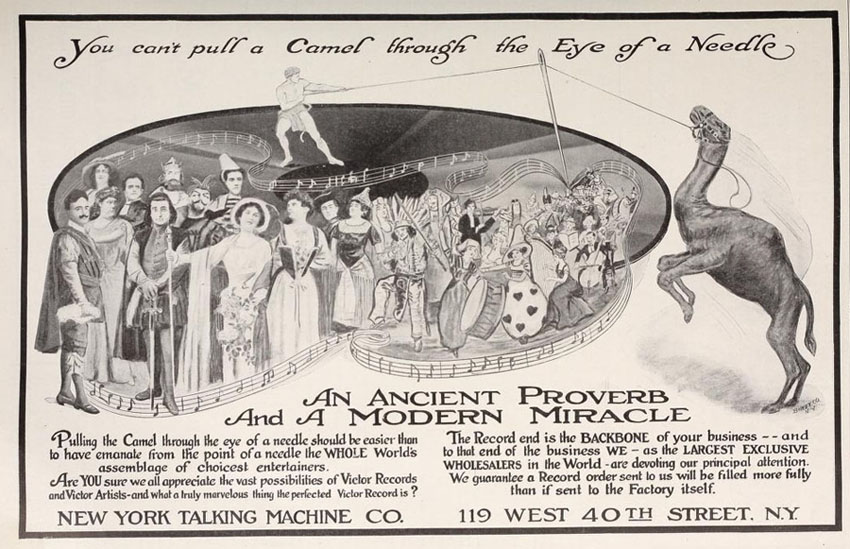
"You can't pull a Camel through
the Eye of a Needle" but that would "be easier than having
the WHOLE World's assemblage of choicest entertainers emanate from
the point of a needle." The Talking Machine World, July
15, 1915
Betty Boop's Voice Recorder
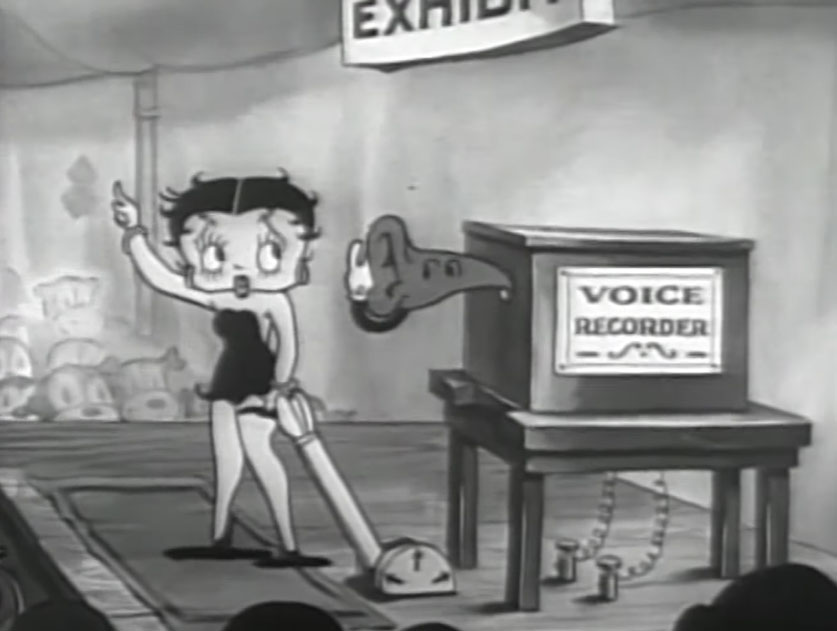
A Max Fleischer Studios short animated
cartoon titled “Betty Boop’s Crazy Inventions” was first theatrically
released in 1933. One of the "Crazy Inventions" exhibits
was a "Voice Recorder demonstrated by Betty Boop. This Voice
Recorder had a unique recording process with a mouse inside the box
and the mouse's tail acting as the record's needle.
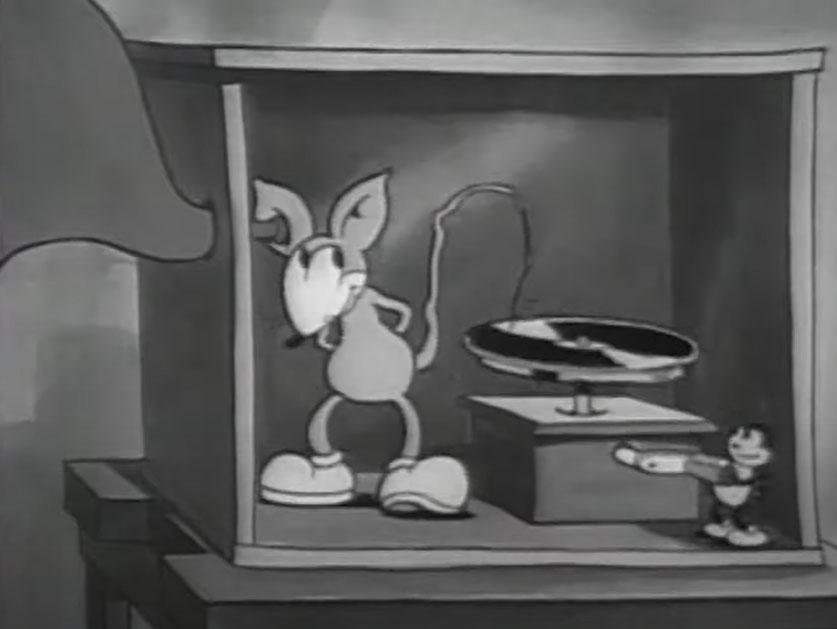
To watch this scene from
"Betty Boop's Crazy Inventions" cartoon see the PhonoToons'
Betty Boop.
What are needles for? (The
answer found in a 1915 periodical)
Grandmother: “How useless
girls are today. I don’t believe you know what needles are for.”
Girl: “How absurd you are,
grandma. Of course I know what needles are for. They’re to make
the graphophone play.”
The Onlooker, Foley, Alabama,
1915
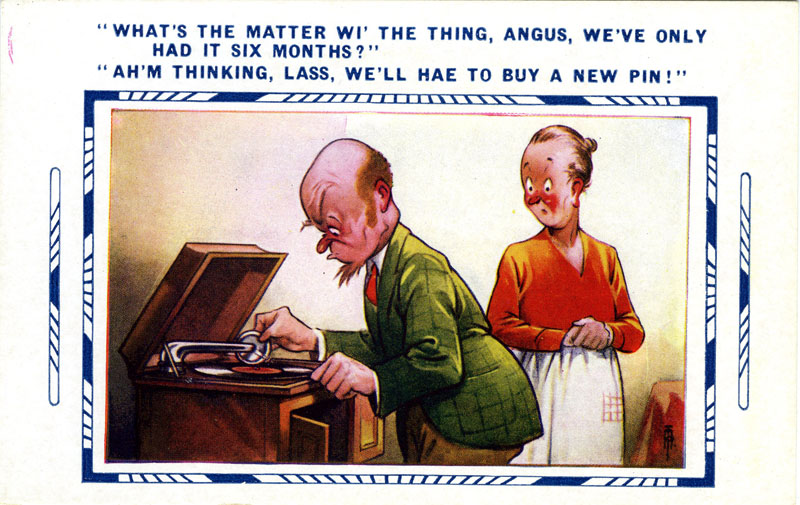
Scotch Comic Series postcard
circa 1930's
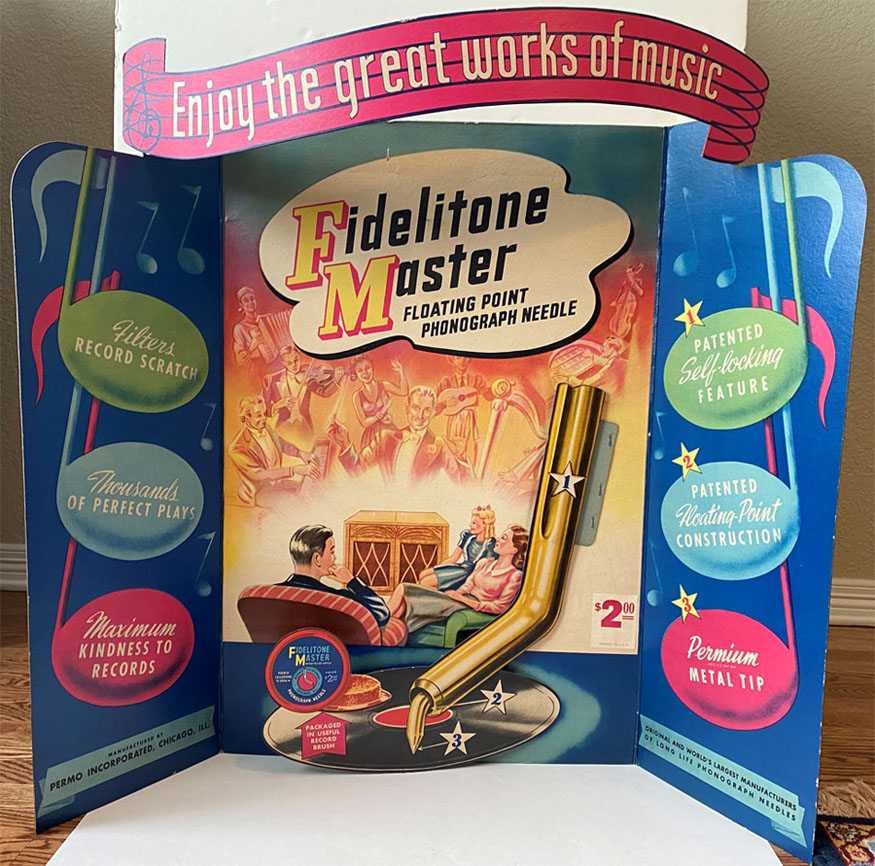
Fidelitone Master Floating
Point Phonograph Needle Dealer's Display circa 1950 (PM-1974)
This display is another example of the
phonograph advertising showing the family entertained by the "Stage
of the World" in their own home. For more information about
Fidelitone Needles, see Made
in Chicago Museum, Permo Inc. / Fideltone est. 1929
For other phonograph connections with needles
see Phonographia's Sewing
Machines and the Phonograph.

Phonographia
|

























